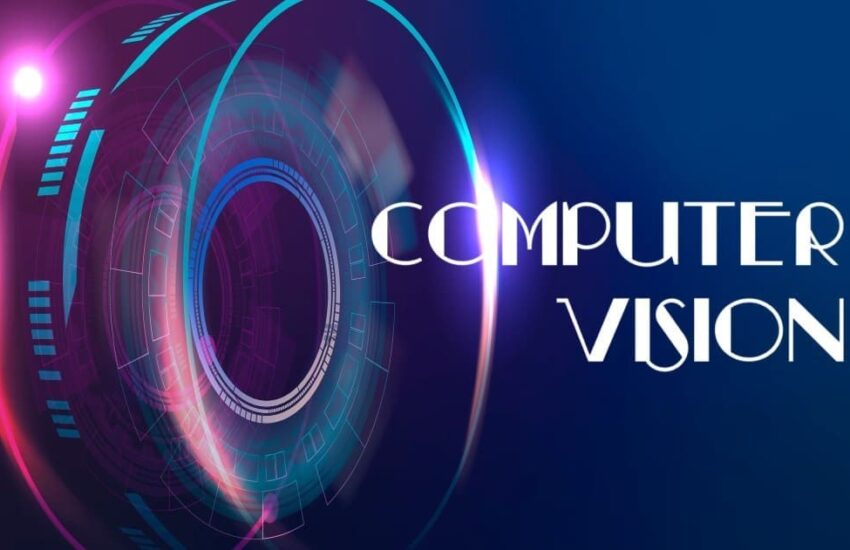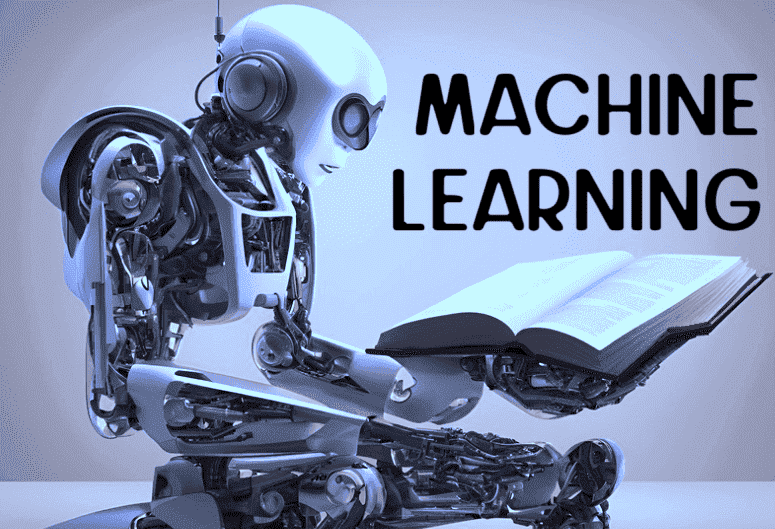
Overview:
Before diving into “what is a decentralized app”, let’s first comprehend its significance. Decentralized applications (dApps) signify a monumental shift in digital technology, transitioning from centralized systems to blockchain-powered networks. Operating on decentralized infrastructure, dApps facilitate peer-to-peer interactions, embodying principles of transparency, immutability, and cryptographic security. While they’ve gained traction for enabling trustless transactions and financial inclusivity, dApps confront challenges like scalability constraints, regulatory ambiguities, and user experience improvements.
Within the dynamic domain of decentralized applications, notable trends emerge, shaping the technology’s trajectory. Interoperability, scalability solutions, and the surge of decentralized finance (DeFi) spearhead innovation and adoption. Efforts in interoperability aim to seamlessly connect disparate blockchain networks, fostering data exchange among dApps. Scalability solutions, including layer 2 scaling and sharding, target enhanced throughput and reduced fees. Simultaneously, the rapid expansion of DeFi transforms traditional financial services, offering users unprecedented autonomy in lending, borrowing, and trading. Nevertheless, amidst these trends, regulatory complexities persist, with policymakers navigating the balance between innovation and regulatory compliance in the evolving dApp landscape.
Contents:
- What is a Decentralized App (dApp)
- Key Trends in Decentralized Apps (dApps)
- Key Benefits of Decentralized Apps (dApps)
- Key Challenges in Decentralized Apps (dApps)
- Key Applications of Decentralized Apps (dApps)
- Major Players in Decentralized Apps (dApps)
- Key Regulatory Framework of Decentralized Apps (dApps)
- Future Outlook and Innovations in Decentralized Apps (dApps)
- Summing Up
So, what is a Decentralized Application (dApp):
Decentralized applications (dApps) are software applications that operate on decentralized networks such as blockchain, rather than centralized servers. They leverage the principles of decentralization, transparency, and immutability to provide users with enhanced security, privacy, and control over their data and transactions.
Key Trends in Decentralized Applications (dApps):
1. Interoperability:
Interoperability aims to connect disparate blockchain networks, allowing them to communicate and share data seamlessly. Projects like Polkadot and Cosmos are leading efforts in this space, enabling cross-chain interoperability and communication between different blockchains. For instance, Polkadot’s parachain architecture allows specialized blockchains to connect to the Polkadot network, fostering a vibrant ecosystem of interoperable dApps.
2. Scalability Solutions:
Scalability remains a critical challenge for blockchain networks, particularly those like Ethereum with high demand and congestion. Layer 2 solutions such as Optimistic Rollups and zkRollups aim to increase throughput and reduce transaction costs by processing transactions off-chain and then settling them on the main blockchain. Ethereum’s Ethereum 2.0 upgrade, transitioning from a proof-of-work to a proof-of-stake consensus mechanism, is another significant scalability solution in development.
3. DeFi Expansion:
Decentralized finance (DeFi) has experienced explosive growth, offering a wide range of financial services without traditional intermediaries. Examples include lending platforms like Compound and Aave, decentralized exchanges (DEXs) like Uniswap and SushiSwap, and yield farming protocols like Yearn Finance. The rise of algorithmic stablecoins like MakerDAO’s DAI and governance tokens that incentivize participation in DeFi protocols further illustrates the innovation in this space.
4. NFTs and Digital Ownership:
Non-Fungible Tokens (NFTs) have gained mainstream attention for their ability to represent ownership of unique digital assets such as artwork, collectibles, and virtual real estate. Platforms like OpenSea and Rarible allow users to buy, sell, and trade NFTs, creating new opportunities for creators and collectors alike. Examples of notable NFT projects include CryptoKitties, NBA Top Shot, and digital artist Beeple’s $69 million sale of an NFT artwork.
5. Governance and DAOs:
Decentralized autonomous organizations (DAOs) are entities governed by smart contracts and operated by their members without centralized control. DAOs enable transparent and community-driven decision-making processes, often through token-based voting mechanisms. Projects like DAOstack and Aragon provide infrastructure for creating and managing DAOs, empowering communities to govern their own protocols and ecosystems. Notable DAOs include The DAO, which raised over $150 million in 2016 before being exploited, and MakerDAO, which governs the Maker protocol and the DAI stablecoin.
Key Benefits of Decentralized Applications (dApps):
1. Security:
The decentralized nature of dApps reduces the risk of single points of failure and malicious attacks. Immutable blockchain ledgers provide transparency and auditability, enhancing security.
2. Transparency:
Transactions on blockchain networks are publicly verifiable and auditable, promoting trust and transparency among users.
3. Censorship Resistance:
Decentralized networks are resistant to censorship and tampering, ensuring that transactions and data remain immutable and accessible.
4. Global Accessibility:
Decentralized applications enable anyone with an internet connection to access financial services, regardless of geographical location or socioeconomic status.
Key Challenges of Decentralized Applications (dApps):
1. Scalability:
Scalability limitations, such as network congestion and high transaction fees, hinder the mass adoption of dApps. Solutions like layer 2 scaling and sharding are still in development.
2. User Experience:
User experience remains a challenge for dApps, with issues like slow transaction speeds, complex onboarding processes, and private key management deterring mainstream users.
3. Regulatory Uncertainty:
Regulatory frameworks for blockchain and cryptocurrencies vary widely between jurisdictions, creating compliance challenges for dApp developers and users. Clarifying regulations is crucial to fostering innovation while ensuring consumer protection.
4. Smart Contract Risks:
Smart contracts are susceptible to bugs, vulnerabilities, and exploits, leading to security breaches and financial losses. Formal verification techniques and security audits are essential to mitigate these risks.
Key Application Areas of Decentralized Applications (dApps):
1. Decentralized Finance (DeFi):
DeFi encompasses a broad range of financial services, including lending, borrowing, trading, and asset management. Examples include lending platforms like Compound, decentralized exchanges (DEXs) like Uniswap, and derivatives protocols like Synthetix.
2. Supply Chain Management:
Blockchain-based supply chain solutions provide transparency and traceability of goods throughout the supply chain, reducing fraud and ensuring product authenticity. Projects like VeChain and IBM Food Trust are implementing blockchain in supply chain management.
3. Digital Identity:
Decentralized identity solutions enable individuals to control and manage their digital identities securely and privately. Self-sovereign identity projects like Sovrin and uPort use blockchain technology to verify and authenticate identities without relying on central authorities.
4. Content Distribution:
Decentralized content platforms empower creators to publish, share, and monetize digital content without intermediaries. Projects like Steemit and LBRY leverage blockchain to reward content creators and provide censorship-resistant publishing platforms.
5. Gaming:
Blockchain gaming integrates decentralized technology to enable ownership of in-game assets, provably fair gameplay, and player-driven economies. Examples include Axie Infinity, CryptoKitties, and Decentraland.
Major Players in Decentralized Applications (dApps) Ecosystem:
Ethereum: Ethereum is a leading blockchain platform for building dApps and smart contracts, with a vast ecosystem of developers and projects.
Binance Smart Chain: Binance Smart Chain is a smart contract platform developed by Binance, offering fast and low-cost transactions for dApps and DeFi protocols.
Solana: Solana is a high-performance blockchain platform supporting scalable dApps and DeFi applications, with fast transaction speeds and low fees.
Polygon: Polygon is an Ethereum-compatible scaling solution that enables fast and low-cost transactions for dApps and blockchain interoperability.
Cardano: Cardano is a third-generation blockchain platform focused on scalability, interoperability, and sustainability, with a strong emphasis on academic research and peer-reviewed development.
Regulatory Framework of Decentralized Applications (dApps):
Global Regulatory Landscape:
Regulatory approaches to blockchain and cryptocurrencies vary significantly across different jurisdictions, creating a complex and evolving landscape for dApp developers and users.
Some countries, such as Switzerland, Singapore, and Malta, have embraced blockchain technology and cryptocurrencies, enacting favorable regulatory frameworks to attract blockchain businesses and foster innovation.
Other countries, like China and India, have taken a more cautious approach, imposing restrictions or outright bans on cryptocurrency trading and initial coin offerings (ICOs) while exploring the potential of blockchain technology in other domains.
Compliance Requirements:
Compliance requirements for dApps may include anti-money laundering (AML) and know your customer (KYC) regulations, securities laws, and tax obligations, depending on the nature of the dApp and the jurisdiction in which it operates.
Regulatory compliance can be particularly challenging for decentralized applications due to their decentralized and permissionless nature, making it difficult to identify and enforce compliance measures on individual users and transactions.
Projects conducting token sales or initial coin offerings (ICOs) must navigate securities regulations to ensure compliance with applicable laws, avoiding legal and financial repercussions.
Regulatory Clarity and Guidance:
Lack of clear regulatory guidance and uncertainty about the legal status of cryptocurrencies and decentralized applications can create barriers to adoption and investment, stifling innovation and growth in the blockchain ecosystem.
Regulatory agencies and policymakers are increasingly engaging with industry stakeholders to develop clearer regulatory frameworks and guidelines for blockchain and cryptocurrencies, aiming to balance innovation with consumer protection and market integrity.
Initiatives such as the Financial Action Task Force (FATF) guidelines on virtual assets and the European Union’s proposed Markets in Crypto-Assets (MiCA) regulation seek to provide clarity and harmonize regulatory standards for cryptocurrencies and digital assets across jurisdictions.
Regulatory Enforcement and Compliance Challenges:
Enforcement of existing regulations and compliance with regulatory requirements present challenges for decentralized applications and blockchain projects, particularly in decentralized finance (DeFi) and peer-to-peer transactions where intermediaries are absent.
Regulatory authorities face difficulties in monitoring and regulating decentralized applications due to their distributed and pseudonymous nature, raising concerns about illicit activities such as money laundering, terrorist financing, and fraud.
Collaboration between regulatory agencies, law enforcement, and industry stakeholders is essential to develop effective compliance mechanisms and enforcement strategies for decentralized applications, fostering trust and legitimacy in the blockchain ecosystem.
Emerging Regulatory Trends:
Emerging regulatory trends in blockchain and cryptocurrencies include efforts to strike a balance between innovation and consumer protection, foster financial inclusion, and mitigate risks associated with emerging technologies.
Regulatory sandboxes and innovation hubs provide safe environments for blockchain startups and dApp developers to test and iterate their solutions under regulatory supervision, facilitating experimentation and regulatory compliance.
Cross-border regulatory cooperation and coordination initiatives aim to address jurisdictional challenges and promote harmonization of regulatory standards for blockchain and cryptocurrencies, enabling seamless global interoperability and compliance.
Future Outlook and Innovation in Decentralized Applications (dApps):
1. Scalability Solutions:
Continued research and development efforts are focused on scaling solutions to address the throughput limitations of existing blockchain networks.
Innovations such as state sharding, which partitions the blockchain state to enable parallel transaction processing, hold promise for significantly increasing network throughput.
Layer 2 scaling solutions like zkRollups and Optimistic Rollups are expected to mature, providing efficient off-chain transaction processing while maintaining the security guarantees of the underlying blockchain.
2. Privacy Enhancements:
Privacy-enhancing technologies such as zero-knowledge proofs (ZKPs) and secure multi-party computation (MPC) are being integrated into decentralized applications to enhance user privacy and confidentiality.
Projects like Zcash and Enigma are pioneering the use of ZKPs to enable private transactions and data sharing while preserving blockchain transparency and integrity.
Innovations in privacy-preserving smart contracts aim to enable confidential computation and data sharing without compromising security or transparency.
3. Decentralized Finance (DeFi) Evolution:
The DeFi space is expected to continue evolving with the introduction of new financial instruments, derivatives, and risk management solutions.
Innovations such as decentralized insurance protocols and prediction markets are emerging to address gaps in traditional financial markets and provide decentralized alternatives.
Cross-chain interoperability solutions will enable DeFi protocols to seamlessly interact with assets and liquidity across different blockchain networks, further expanding the reach and liquidity of decentralized finance.
4. Decentralized Autonomous Organizations (DAOs):
DAOs are poised to play an increasingly significant role in governance, coordination, and decision-making within decentralized ecosystems.
Innovations in DAO governance mechanisms, such as quadratic voting and futarchy, aim to enhance decision-making efficiency and mitigate governance challenges such as voter apathy and plutocracy.
DAO infrastructure projects are developing tools and frameworks to simplify the creation and management of DAOs, making them more accessible to communities and organizations of all sizes.
5. Cross-Industry Integration:
Blockchain technology is increasingly being integrated into traditional industries such as supply chain management, healthcare, and government services.
Innovations in blockchain interoperability and data oracles enable seamless integration of decentralized applications with existing systems and processes, unlocking new use cases and efficiencies.
Projects like Chainlink are pioneering decentralized oracle networks to securely and reliably connect blockchain smart contracts with real-world data and events, facilitating automation and trustless interactions.
6. Environmental Sustainability:
Addressing concerns about the environmental impact of blockchain networks, innovations in consensus mechanisms and energy-efficient protocols aim to reduce the carbon footprint of decentralized applications.
Projects like Algorand and Tezos are exploring proof-of-stake (PoS) consensus mechanisms as more energy-efficient alternatives to traditional proof-of-work (PoW) systems, promoting sustainability without compromising security or decentralization.
7. User Experience Enhancements:
Improving the user experience of decentralized applications is a key focus area for developers and designers.
Innovations in wallet technology, identity management, and decentralized storage aim to simplify user interactions and reduce friction in onboarding and transacting with dApps.
User-friendly interfaces and intuitive design principles are being adopted to make decentralized applications more accessible to mainstream users, driving adoption and usability.
Summing Up:
In conclusion, decentralized applications (dApps) represent a pivotal advancement in digital technology, ushering in a new era of decentralized, transparent, and secure digital interactions. Built on blockchain technology, dApps leverage principles such as transparency, immutability, and cryptographic security to revolutionize various industries. From finance and supply chain management to governance and content distribution, dApps offer solutions that prioritize trustless transactions, data privacy, and financial inclusivity. However, their journey is not without challenges, as they grapple with scalability limitations, regulatory uncertainties, and the need for improved user experiences.
As the dApp ecosystem continues to evolve, key trends such as interoperability, scalability solutions, and the exponential growth of decentralized finance (DeFi) shape its trajectory. These trends drive innovation and adoption, pushing the boundaries of what decentralized applications can achieve. Nevertheless, navigating regulatory frameworks remains essential for compliance and fostering innovation. Policymakers worldwide face the complex task of balancing innovation with consumer protection and regulatory compliance in this rapidly evolving landscape. Despite these challenges, the potential of decentralized applications to transform digital interactions and transactions remains vast, promising a future where decentralized technology empowers individuals and communities worldwide.












7 thoughts on “What is a Decentralized App (dApp)? Explore it Through this Guide”